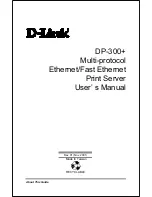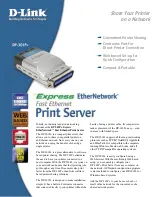
Congratulations! Your TeraStation is set up. Please see the
TeraStation User Manual
for more help and configuration options.
Note on RAID arrays:
TeraStation uses
RAID
(“Redundant Array of Independent Disks”)
technology to control the four hard drives in your TeraStation. RAID
may be configured several ways:
RAID Spanning
- All four drives are combined into one large drive,
giving the maximum capacity for your TeraStation. RAID Spanning is
efficient, but has no redundancy. If one hard drive fails, all data on
the TeraStation is lost.
RAID 1
(mirroring) - Hard drives (or spanned pairs of hard drives) are
arranged in mirrored pairs. Each half of the pair reads and writes
exactly the same data. This costs you half of the total capacity of your
TeraStation, but provides excellent redundancy. If a hard drive fails,
the mirror set continues to operate, allowing you to work normally.
You may replace the damaged or defective drive at any time, and
normal RAID 1 mirroring will then be automatically restored.
RAID 5
(parity) - All drives in a RAID 5 array reserve part of their
data space for parity information, allowing all data to be recovered
if a single drive fails. The parity information takes up about one
hard drive’s worth of space, so if you set up all four drives in the
TeraStation as a RAID 5 array, your usable capacity will be about
3/4 of the total capacity of the TeraStation. RAID 5 is an excellent
compromise between efficiency and security. If a single drive fails,
no data is lost. After the damaged or defective drive is replaced, your
TeraStation will automatically restore all data on the new drive and
resume normal RAID 5 operation. This is how your TeraStation is set
up out of the box.
Out of the box, your TeraStation is configured with RAID 5. This
means that you’ll only be able to use about 3/4 of the total capacity
of your TeraStation, but your data will be much safer than it would
be without fault tolerance. If you wish to use a different type of RAID,
instructions for changing your RAID settings are in the TeraStation
manual, available on your TeraNavigator CD.
It is important to replace broken drives as soon as possible, as the
TeraStation may not be fault tolerant after a drive fails.



























